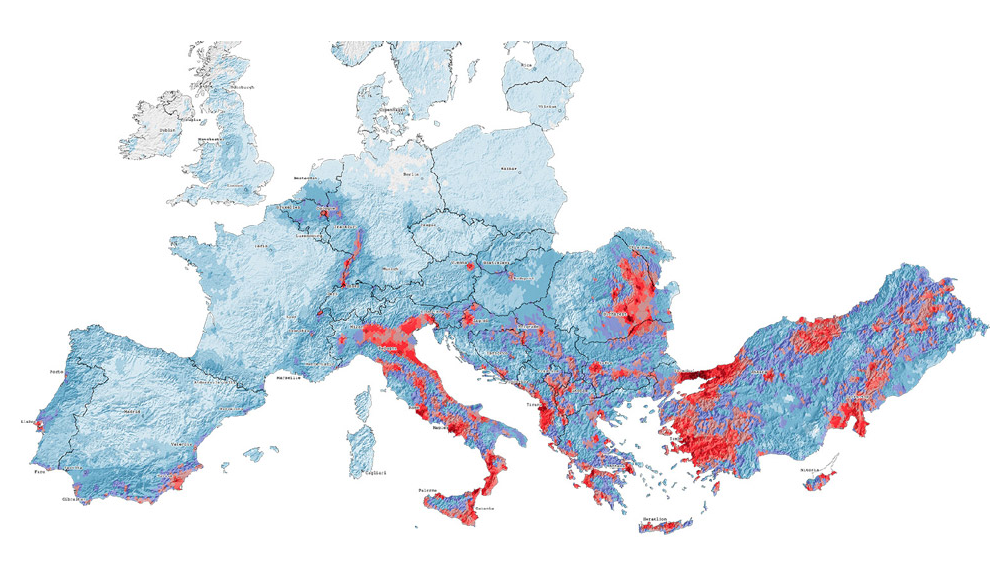A new interactive map has been created that shows the earthquake risk in Europe, highlighting the regions where earthquakes could cause the most damage to both the population and the economy. Earthquakes are most likely to occur in areas where tectonic plates meet and cause tension in the rock through their movements. Using historical earthquake data and geophysical analysis, the likelihood of earthquakes in a particular area can be estimated. In Germany, the regions most at risk are the pre-Alpine region, the area near the Czech border, and the Rhine Valley. Recently, the Helmholtz Centre Potsdam – German Research Centre for Geosciences (GFZ) conducted a simulation that showed the impact of a strong earthquake in Cologne.
Under the leadership of the Swiss Seismological Service, a European research team, including the Swiss Federal Institute of Technology in Zurich (ETH Zurich) and the Helmholtz Centre Potsdam – German Research Centre for Geosciences (GFZ), has created an updated earthquake hazard map for the whole of Europe. The interactive map is based on data on earthquake frequency, geodynamics, and seismology, which were analyzed using a new earthquake model. According to the map, the risk of earthquakes occurring is highest in Turkey, Greece, Albania, Italy, and Romania, followed by the Balkan region. Compared to older hazard maps, earthquakes occur more frequently in some areas in western Turkey, Greece, Albania, Romania, and southern Spain, according to the new map.
A second map shows the earthquake risk, or the impact of an earthquake on the population and economy. This is the first map of its kind for Europe. The scientists analyzed data on building and population density, local subsoil, and earthquake hazard of buildings. The earthquake risk is highest in cities such as Istanbul and Izmir in Turkey, Catania and Naples in Italy, Bucharest in Romania, and Athens in Greece. 80% of the modeled economic damage caused by earthquakes in Europe is concentrated in these four countries. In addition to active plate tectonics, this is also due to the poorly earthquake-resistant building structure. The earthquake risk is also above average in cities such as Zagreb, Tirana, Sofia, Lisbon, Brussels, and Basel. Berlin, London, and Paris, on the other hand, have a low earthquake risk. The creators of the maps hope that they will help to better plan precautionary measures, which can reduce the potential consequences of earthquakes.










